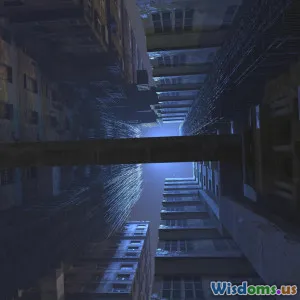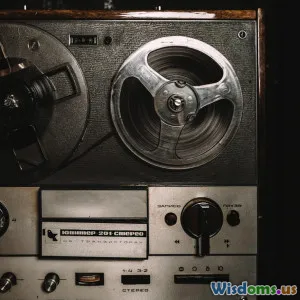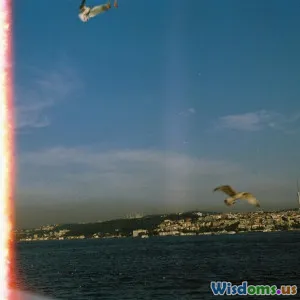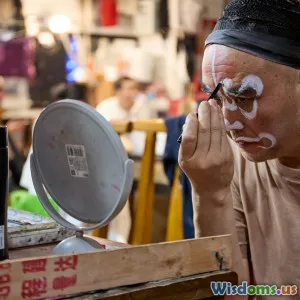
Breaking Down the Visual Style of Blade Runner
10 min read Explore Blade Runner's iconic visual style, revealing its deep influence on sci-fi cinema and design through atmospheric effects, cyberpunk aesthetics, and futuristic urban landscapes. (0 Reviews)
Breaking Down the Visual Style of Blade Runner
When Ridley Scott’s Blade Runner premiered in 1982, it didn’t simply introduce audiences to a story of androids and existential questions—it fundamentally redefined how the future could look on screen. The film’s visual style has since become a cornerstone of science fiction, blending noir, dystopia, and cyberpunk motifs into a vivid, unmistakable aesthetic that continues to inspire filmmakers, artists, and designers.
But what precisely makes Blade Runner’s visuals so powerful and enduring? This article will take a deep dive into the core elements that compose its visual style, from lighting and architecture to costume design and color palettes, exploring the deliberate choices that brought its bleak vision of the future to life.
1. Setting the Visual Tone: Noir Meets Futurism
The foundation of Blade Runner’s look is its clever hybridization of traditionally contrasting genres—film noir and futuristic sci-fi. Drawing from noir’s chiaroscuro lighting (strong contrasts of light and shadow) and its urban gloom, the movie crafts an atmosphere thick with mystery and unease.
Lighting and Atmosphere
Cinematographer Jordan Cronenweth employed a muted palette dominated by deep shadows, rainy streets reflecting neon signs, and pervasive darkness punctuated by spots of artificial light. This lighting not only echoes 1940s detective films but also evokes a sense of decay and claustrophobia fitting a dystopian Los Angeles in 2019 (the film’s then-future).
For example, in scenes such as Deckard’s apartment or the police station, slick wet surfaces and flickering vapor lamps enhance the oppressive, suffocating feel. Fog and smoke effects—consisting of layered haze and steam from vents—add depth to compositions, allowing light beams to highlight specific areas or characters subtly.
Cityscapes and Architecture
Imagine towering skyscrapers densely packed with chaotic advertisements and a mélange of cultural influences. The cityscape, inspired by Los Angeles, Tokyo, and Hong Kong, is an amalgamation of Eastern and Western architectural styles. The crowded high-rises, punctuated by gargantuan video billboards, create a commodified, consumerist future reflecting themes of corporate dominance and identity loss.
Scott’s team cited the real urban congestion of cities like Tokyo, dense with neon signs and overflowing streets, to create a “future that feels lived in,” as co-production designer Syd Mead noted. Buildings appear gritty, worn, and almost organic, contrasting with shiny, clean visions of futuristic cities from previous sci-fi films.
2. Cyberpunk Aesthetics and Cultural Fusion
Blade Runner didn’t just visually depict a futuristic world—it practically pioneered the cyberpunk genre aesthetics that celebrate digital decay and cultural hybridization.
Neon and Color Palette
The palette mainly features cold blues, greens, and muted grays offset by flashes of vibrant neon pink, red, and yellow. Neon signs—often written in Japanese, Chinese, and other Asian scripts—orient the viewer toward a post-globalized melting pot.
This layered cultural texture hints at real-world trends of globalization and immigration that create vibrant urban landscapes. The fictional Tyrell Corporation logo itself, resembling a Japanese kanji, reinforces this intercultural vision.
Costume and Character Design
The characters sport clothing that blends retro-futurism with a grim realism. Garments hint at past decades—the 1940s trench coats and fedora hats on Deckard feel deliberately anachronistic—while integrating futuristic materials and motifs such as synthetic fabrics, reflective surfaces, and layered details.
Star designer Michael Kaplan deliberately mixed Asian and Western elements, presenting a multicultural nightlife where body modifications and technology-infused accessories abound. This fusion reflects not only aesthetic trends but also thematic concerns regarding identity, humanity, and cultural collision.
3. Technological Ruin and Organic Decay
Unlike utopian sci-fi visuals showing towering crystalline towers and spotless automation, Blade Runner expertly conveys a world where technology and nature co-exist uneasily.
Practical Effects and Set Design
The sets are intricately detailed with physical models and miniatures, leading to tactile realism. From the moth-like glow of origami figures on windows to the cluttered interiors stuffed with dusty electronics, practical effects anchor the world in gritty reality.
Set decorator Lawrence G. Paull incorporated consumer electronics from the early 1980s, reimagined as futuristic tech—large dials, analog gauges, and obsolete computer terminals populate interiors, reflecting technology’s ongoing evolution and obsolescence.
Nature Among Ruins
In contrast to cold steel and synthetic surfaces, images of natural elements—like the artificial owl or the glowing red eyes of the replicant Zhora encased in jellyfish—reveal a persistent organic presence. This dichotomy plays into the film’s philosophical exploration of what it means to be truly alive.
The setting is perpetually rainy, further symbolizing stagnation and cleansing—a bleak cleansing that never quite arrives. This environmental detail enhances the mood and reflects anxieties surrounding urban sprawl and ecological degradation prevalent in the early ’80s and still relevant today.
4. Cinematic Techniques Amplifying Visual Style
Ridley Scott’s visionary direction combined with Jordan Cronenweth’s cinematography uses multiple cinematic techniques to heighten the immersive visual experience.
Use of Shadows and Framing
The recurring motif of reflections and shadows not only reinforces the noir influence but also thematically underscores ideas of identity ambiguity and hidden truths. Scenes often frame Deckard behind glass, grills, or reflections, visually representing his uncertain state between human and replicant.
Slow Pacing and Deliberate Composition
The methodical pacing allows viewers to soak in each environment, with lingering shots on neon-drenched streets and rain-slicked alleys. Each frame is carefully composed—either symmetrical cityscapes or asymmetric interior shots—that contrast order with chaos.
Scott also uses camera movement sparingly; slow tracking shots hover around characters to evoke both alienation and curiosity.
5. Influence and Legacy of Blade Runner’s Visual Style
Blade Runner’s visual style has profoundly impacted cinema, video games, comics, and fashion.
Cultural Impact
Cyberpunk aesthetics, rooted in this film, echo through works as varied as Ghost in the Shell, The Matrix, and Altered Carbon. The neon-heavy look and dystopian urban motifs have become synonymous with depictions of high technology fused with societal decay.
Cutting-edge games like Cyberpunk 2077 explicitly reference Blade Runner’s layered city design and stylistic elements. Fashion designers incorporate its blend of retro and futuristic looks, reflecting the recurring theme of identity fluidity.
Academic and Critical Praise
Scholars like Scott Bukatman highlight Blade Runner's ability to envision “a future of retiring modernity,” an artistic synthesis of machines, humans, culture, and environment. Its visuals continue to be studied in film schools as a masterclass in world-building through aesthetic detail.
Conclusion: An Everlasting Vision
Decades since its release, Blade Runner remains a visual milestone—not solely for its striking aesthetics but for how sight and spectacle are inextricably tied to its narrative and themes. The film’s intricate fusion of noir lighting, cyberpunk cityscapes, cultural hybridity, and tactile realism conjures a haunting, immersive future that feels simultaneously alien and strangely familiar.
By dissecting its visual style, we appreciate not just the artistry behind Blade Runner but also the enduring cultural anxieties and aspirations it so vividly embodies. For creators and fans alike, Blade Runner is more than a movie; it's a visual language of the future that invites endless exploration.
“Quite an experience to live in fear, isn’t it? That’s what it is to be a slave.” — Roy Batty
Rate the Post
User Reviews
Popular Posts


















